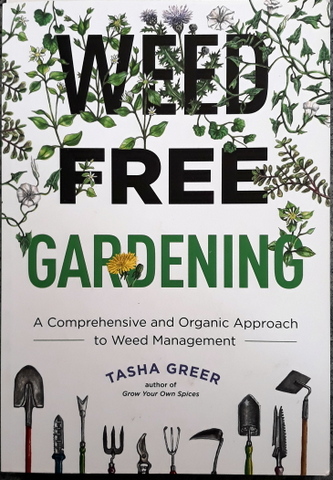I originally included books on weeds as part of ‘Garden Pests, Diseases and Weed books’ over ten years ago, but I have now decided that they need their own specific entry, plus I have lots more weed books to go in. So, here we are!
You may also wish to have a look at the section on wild herb books because there is a large crossover between “wild herbs” and “weeds”. One section mainly concentrates on how to identify and use the target plants, the other how to identify and get rid of them!
Weeds –Compiled by J. N. Whittet - NSW Department of Agriculture (AUS) 1968 (Second Edition) No ISBN – This imaginatively titled book is directed mainly at farmers but still has lots of good information about the identification of weeds, nothing remotely organic to be seen in the controls here though Chapter one talks about weed problems in agricultural and pastoral areas of NSW, chapter two covers weed legislation in NSW and considering how legislation will have changed in the last 50 years, will be well out of date. Chapter three discusses toxic weeds and their effect on livestock, chapter four covers control of weeds ecologically, biologically, mechanically and chemically and chapter five focuses on chemical control. Chapter six (almost half the book) is a description of individual weeds and appropriate control measures. There are a large number of line drawings and colour plates, especially in chapter six.
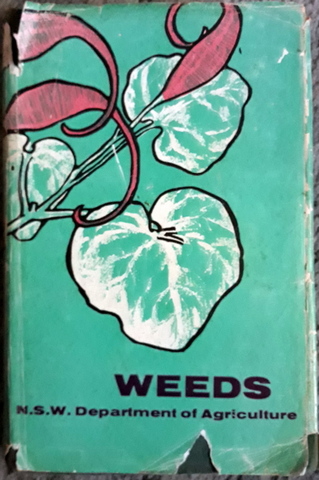
Field Guide to Weeds in Australia – C. Lamp & F. Collet – Inkata Press (AUS) 1989 ISBN 0 909605 53 X – The first three chapters cover What a weed is, reproduction and dispersal and plant identification in general terms. The rest of the book is a series of 331 monographs on individual weeds covering what they look like and where they grow as well as other snippets of information about each weed. Each monograph lists the Latin name, common name, family, a description of the plant and an indication of its status as a weed. There is a colour photograph attached to each monograph but no recommendations on control strategies.

The Weed Book – Mark A. Wolff – New Holland Publishers (AUS) 2012 ISBN 9781877069932 – The bulk of the book is a series of over 120 monographs on individual weeds each giving a description, origin of the weed, distribution around Australia and how the weed is dispersed, as well as a colour photo of each weed. There is a very interesting chapter on hand weeding that I haven’t seen anywhere else but generally the main focus on weed control is chemical control.
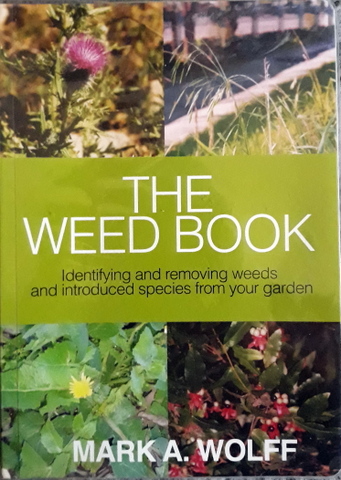
Organic Control of common Weeds – Jackie French – Aird Books (AUS) 1989 ISBN 0 947214 06 2 – This is a great little book, just like you would expect from Jackie French. Chapter one covers living with weeds i.e., what to do with them, chapter two covers weed management including the twelve steps to weed control and weed control strategies for lawns, flower beds, orchards, pasture and vegetable gardens. Chapter three covers fighting weeds including biological control, natural herbicides, companion planting, green manuring and homemade herbicides. Chapter four covers using weeds and includes edible weeds, medicinal weeds, drinks and weeds that can be used as pesticides. Chapter five lists some common weeds, their identification and control. The book has no photos but lots of line drawings.
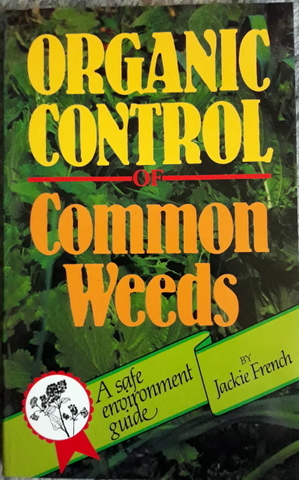
Weed – Tim Marshall – ABC Books (AUS) 2010 ISBN 9 780733 327742 – This small book is a gold mine of information on organic weed control and if you can only buy one book on weed control (in Aus) this should be it! There is a helpful section at the start detailing how best to use the book. Chapter one discusses what a weed is including how they propagate, annual vs perennial weeds and a working definition of the term ‘weed’. Chapter two talks about taking control of weeds including intercropping, cover crops, crop rotation, barrier cropping, mechanical, thermal and chemical control. Chapter three lists common weeds and potential control strategies for each one. Chapter four covers ‘good’ weeds and how they can be used. Chapter five covers environmental weeds and their control, Chapter six is a quick reference guide listing a weed and then the options for various types of control (physical, chemical, thermal, cultural). The book has a small number of line drawings.
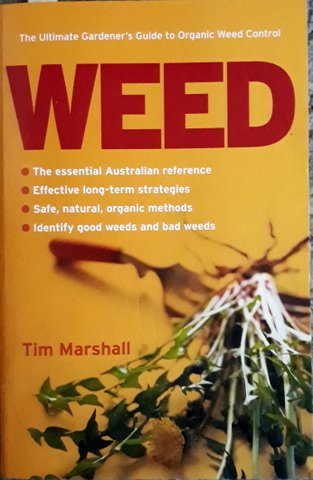
The Wild Wisdom of Weeds – Katrina Blair – Chelsea Green Publishing (US) 2014 ISBN 978 1 60358 516 3 – Part one of the book (Back to Basics) covers the authors’ journey with wild plants, symbiotic relationships, these plants as part of nature’s Permaculture and “wild intelligence”. Part two, the majority of the book is a series of extensive monographs on thirteen wild foods: amaranth, chickweed, clover, dandelion, dock, grass, knotweed, lambs quarters, mallow, mustard, plantain, purslane and thistle. Each monograph covers the Latin and other names, description, current uses, history, edible uses, medical actions, medicinal uses and a series of recipes. Lots of colour photos.
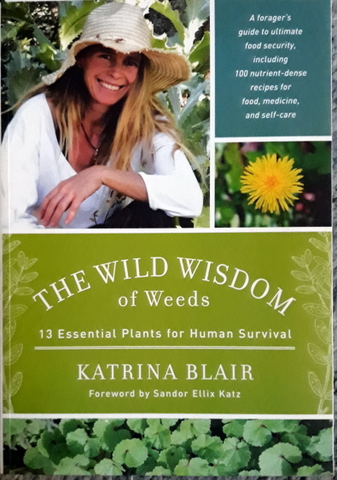
The Wondrous World of Weeds – Pat Collins – New Holland Publishers (AUS) 2017 ISBN 978 1 921517 79 2 – After a very short introduction on what a weed is, the majority of the book is made up of monographs on over 100 weeds present in Australia. Each monograph lists the common and Latin names, were it is distributed within Australia and what its preferred habitat is. The monograph then provides a general description of the plant and detailed descriptions of its leaves, flowers and fruit/seeds. This followed by the plants’ uses as edible, medicinal or on the farm and in the environment. Finally is a reference for further reading and any warnings regarding the use of the weed. There are several colour pictures of each weed covered in the monograph.
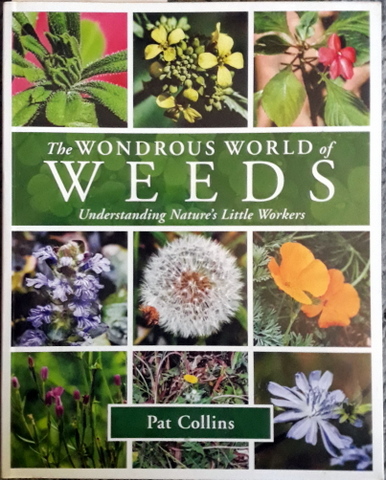
Weeding without chemicals – Bob Flowerdew – Skyhorse Publishing (US) 2012 ISBN 978 1 61608 647 3 – While this edition was published in the US, it was originally published in the UK and is written from a UK perspective. This is not a particularly information dense book, but has some interesting insights. The first part of the book covers what weeds are, why they appear and where they come from. The next part covers why we should weed and when, which weeds are worst and why herbicides should not be used. There is a one-page general approach to weed identification and the rest of the book is on weed control. This includes weeding by hand, while standing up and sitting down, solarisation, methods of excluding weeds like close growing and green manures and weed suppression using various mulches. This is followed by suggestions for organic weed killers (chemical and physical) and composting to finish off weeds. There are then a series of recommendations for weed control in psecif circumstances live veggie gardens or under fruit trees. The book has lots of colour photos.
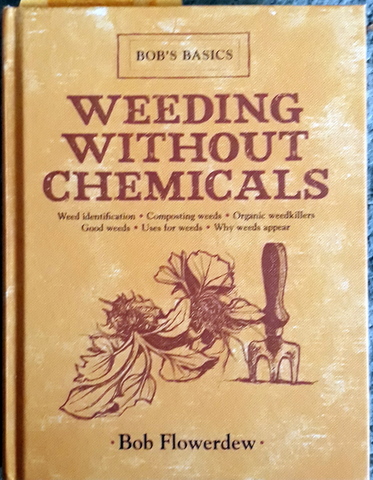
Gardener’s Companion to Weeds – Suzanne Ermet, Leigh Clapp (photographs) – New Holland Publishers (AUS) 2001 ISBN 978 1 87633 477 2 – While this book is mainly about identification of weeds, it starts off with a small section on how to use the book, what a weed is, and control methods: chemical (not organic), and non-chemical weed control. The book is then divided up into sections on aquatic weeds, lawn weeds, garden weeds, pasture and wasteland weeds and invasive plants. Each section is set out A to Z, based on the common name of each weed. Each weed monograph has a colour photo, general description, where they can be found, specific control methods and how the weeds multiply (Disperse). The book has lots of colour photos.
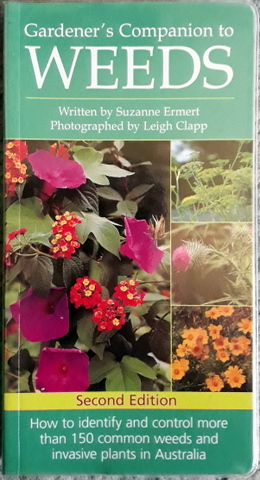
Weeds – An illustrated botanical guide to the weeds of Australia – B.A Auld & R.W. Medd – Inkata Press (AUS) 1992 ISBN 0 909605 37 8 – The book starts of with an introduction and guide to plant groups, then is composed of a series of monographs, broken down into three groups under the headings of Pteridophytes (ferns), monocotyledons and dicotyledons. Each group is set out A to Z based on the scientific name of each weed. Each monograph starts with the family of the weed, its latin name and common name, followed by the origin of the weed a description, the distribution of the weed and it’s importance, and colour photo. This one is fairly technical! Lots of colour photos.
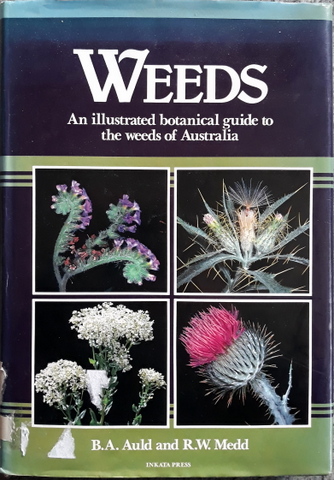
Controlling Weeds Without Using Chemicals – Jo Readman – HDRA/Search Press (UK) 2000 ISBN 0 85532 934 3 – I like this book, but it is little dissapointing that almost half the book is taken up with weed identification rather than weed management as such. The first section of the book is on the ecology of weeds covering lifecycles of various types of plant, how weeds spread vegetatively and how they regenerate. The next section (Know Your Weeds) is about weed identification and contains a colour photo (mostly) and description of 95 common weeds (in the UK). The next section covers the benefits of weeds and how to use them, followed by a small section on why weeds are a problem. On page 44 (of a 61 page book) we get to the principles of organic weed control, which covers composting, presowing cultivations, planting effectively, mulches, green manures, crop rotation, raised beds and hygiene. The next section covers weed removal (hoeing, hand weeding, flame weeding, followed by a sction on weed control in the lawn, and woody weeds. Lots of colour photos, but not a huge amount of detail in each section.
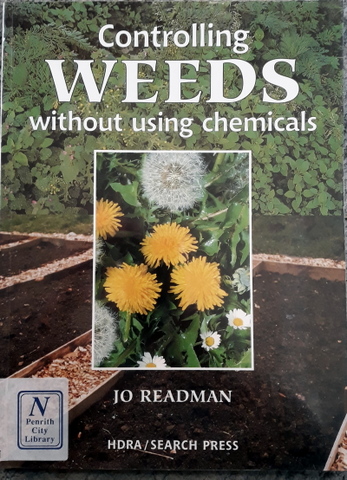
Weed Free Gardening – Tasha Greer – Cool Springs Press (US) 2022 ISBN 978 0 7603 7323 1 – This is a great book, that helped me think more holistically about weed management. I am not 100% sure that all of it is translatable to Aus but it is a great book to make you think. It is written in and introduction and four sections. The introduction covers why the war on weeds cannot be won and the origin of weeds. Section one covers how to prevent weeds being imported onto your property, Section two covers maintaining your property to make it less hospitable to weeds by looking at soil, drainage, adding organic matter and increasing mycorrhizal networks. Section three (reconciliation) covers various ideas to use weeds in weed control. Part four is entitled creating peace in the garden and covers various ways of growing (no dig, grow beds, grow bags) that are less affected by weeds. Throughout the book are a series of specific recommendations, one called ‘weed whack’ which talks about weed control strategies and the second one is ‘tool bar’ which is a series of discussions of the various tools that can be used to manage weeds. This is a great book, worth having. Lots of colour photos.
